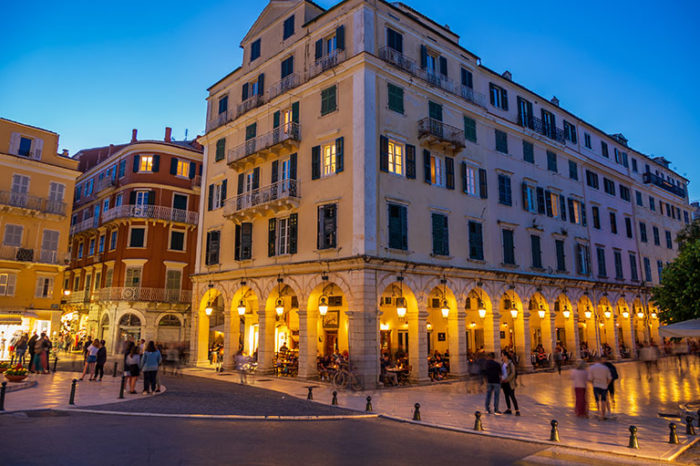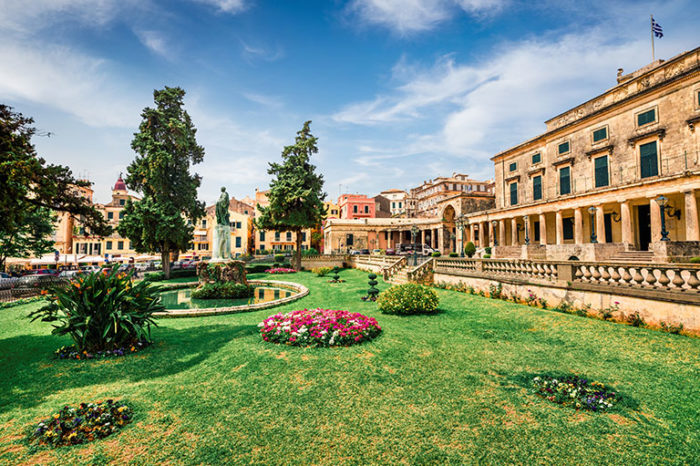Corfu Island
Niki Sunrise Apartments in Achillion Corfu
About Corfu Island
Corfu is one of the far northern and western islands of Greece situated in the Ionian sea. It has a long narrow shape, that is wider to the north of the island and narrow to the south. Kerkyra’s beaches cover a total distance of 217 kilometres creating many capes and coves. The land is mainly mountainous especially in the northern part. Foreigners call Kerkyra Corfu, which originates from the Byzantine term ‘Coryfo’ which means ‘peak’, as the two mountainous peaks are the first image one sees on approaching the island.
Corfu Town
The town of Corfu is characterised by its intense Venetian influences, as well as French and English. It’s a cosmopolitan town with an air of nobility; its main attractions being the large ‘Spianada’ square, which is the largest in the Balkans, the Old and New Fortresses, The Town Hall (San Giacomo theatre), Kanoni (an area close to the airport), Mon Repo (the birthplace of Prince Philip the Duke of Edinburgh) and also the museums of Byzantine and Post Byzantine history.

Corfu Island
Geographically Corfu is in the North Ionian across from the mainland shores and southern Albania. It is surrounded by three smaller islands known as the Diapontia islands (Othonoi, Mathraki and Erikousa). It is also very close to Paxos and Anti-Paxos. All these islands together form the prefecture of Corfu. Corfu has a plethora of museums, monuments and cultural centres. It was Corfu that founded and operated the first university, and its music scene is well known all over Greece. In the town of Corfu there are three main philharmonic bands, the Old Philharmonic, Mantzaros Philharmonic and Kapodistrias Philharmonic. Most villages in Kerkyra also have their own philharmonic band.
Corfu Old Town
The palaces of St.Michael and St.George, also known as the Old Palaces, house a plethora of museums and exhibitions. There is also the building of the Ionian Academy which was the first Greek University founded in 1824, the building of the Ionian parliament, the Town Hall which was erected originally in 1663 as the Stoa of Nobles (Loggia dei Nobili) which later housed the renowned theatre of San Giacomo. There are also the ruins of the Old town (the ancient town of Corfu) near the Kanoni peninsula and many more countless museums and monuments.

Corfu Outskirts
On the outskirts of the town there are many attractions to be visited, such as the ‘Angelokastro’ the Byzantine fortress situated near Paliokastritsa. During your holidays in Kerkyra there are many things to do, enjoy, see and visit. There are lively tourist resorts with a vivid non stop nightlife that are suitable for those who want to explore and admire. Countless popular beaches with crystal clear blue waters surrounded by many cypress trees and raging vegetation. Hidden coastal paradises with little to no tourist intervention for those who appreciate and seek solitude.
Cultural Heritage
The old town of Corfu, full of lively colours and little alleys intertwined among tall medieval buildings, will make you feel as though you are in a different era. The unique cultural heritage of Corfu has left a legacy of beautiful monuments, which cannot be found elsewhere. Corfu gives its visitor a different feeling compared to other Greek islands, because of its unique architectural beauty.

Accommodation
Niki Apartments
Contact Details

